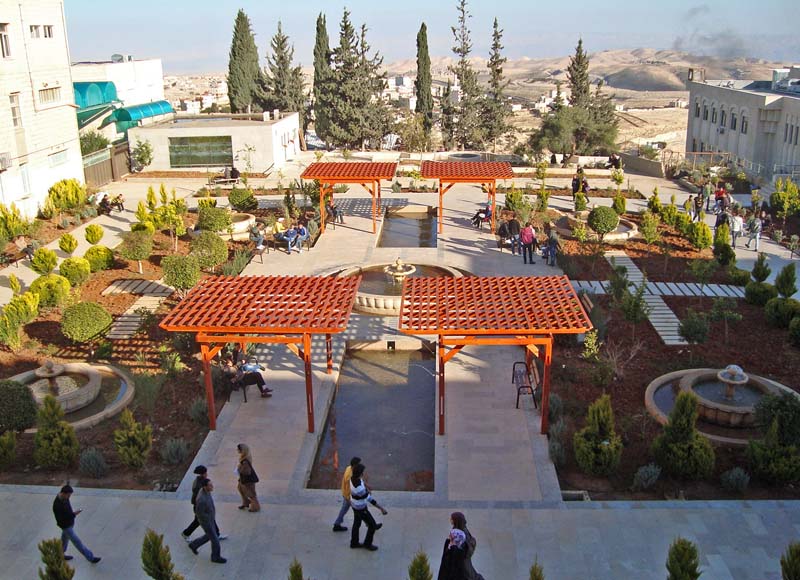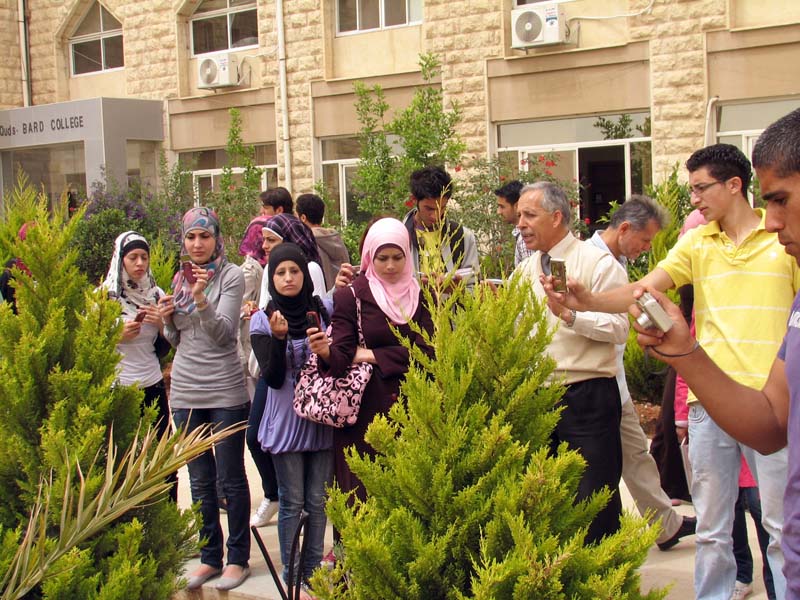Articles
Botanic Garden of Al-Quds University
Article author: FUNCI
Date of publication of the article: 20110624
Year of publication: 2011
Article theme: Cooperation, Garden.
In 2009, FUNCI together with Al-Quds University within the Med-O-Med framework developed this 2000 square meter botanic garden next to the Science and Technology School. The Spanish Agency of International Cooperation for Development, AECID, has supported us through this project.
This garden recreates the collections, philosophy, morphologic characteristics and traditional watering systems of al-Andalus, while focusing on preserving Mediterranean flora and, specifically, the Palestinian one.
The Andalusi Garden has five fountain basins with springs; one of these fountains is in the central area and is surrounded by two ponds, and four are set in the main lawns. These four lawns symmetrically frame the central setting, while another six smaller side-lawns edge the garden. The sprinkling watering system has been set up.
Palestinian Species
The botanical design for the garden is already done. and it was supervised by José Tito Rojo and Manuel Casares, from the University of Granada. 25 spieces of plants that were present in al-Andalus gardens, and also are present in the Palestine native flora will be introduced in the garden of Al Quds. Olives, Date Palms, Carob, Rosemary, Lavender, Thyme, and of course Myrtus are some of these species. In the first days of the spring of 2011 the plantation has started, and the first date palms introduced close to the fountains.
Some of the projected phases have been completed at the botanical garden, like the setting up of a rock garden, which contains native Palestinian species from the mountains and medicinal species. Seeds are being collected and the herbarium work using many species of the Palestinian flora is being developed.
The establishment of this Garden is under a strategy which encompasses several courses of action: on the one hand, Al-Quds University aims at increasing the proportion of green areas on campus by means of other gardens and future initiatives such as a seed bank and botanic projects.



